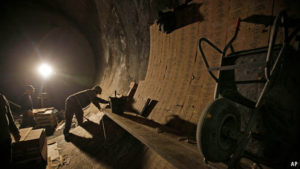Source: economist.com
Published: August 25, 2016

THE cement industry is one of the world’s most polluting: it accounts for 5% of man-made carbon-dioxide emissions each year. Making this most useful of glues requires vast quantities of energy and water. Calcium carbonate (generally in the form of limestone), silica, iron oxide and alumina are partially melted by heating them to 1450°C in a special kiln. The result, clinker, is mixed with gypsum and ground to make cement, a basic ingredient of concrete. Breaking down the limestone produces about half of the emissions; almost all the rest come from the burning of fossil fuels to heat the kiln.
About 4.3 billion tonnes of cement were consumed in 2014—China alone needed more than half of that. It also produces 60% of the stuff, followed at a distance by India and America. The industry brings in about $250 billion a year. Cement firms have not attracted the ire of environmental campaigners in the way that oil firms have. But that could change if they shirk efforts to cut emissions in a manner consistent with keeping the world less than 2°C warmer than it was in pre-industrial times (as agreed at UN climate talks last year). For now, few cement companies are setting environmental targets that are tough enough.
The main reason is a lack so far of strong enough financial imperatives, but that is changing. And as is the case for many industries, going green could save firms money. Around a third of cement’s production costs come from energy bills. Retrofitting old kilns to improve thermal efficiency can lower the industry’s energy needs by two-fifths, according to the Carbon Disclosure Project, a research body. Another way to go green is to reduce the amount of clinker in cement by using waste substitutes such as fly ash from coal plants or slag from steel blast furnaces, but these are becoming scarcer and more expensive.
